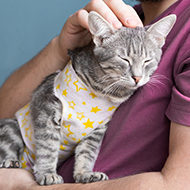WWII pigeon who saved aircrew honoured with statue
Winkie's actions helped save the lives of four RAF servicemen.
A new statue has been unveiled in Dundee to honour a carrier pigeon who saved the lives of four RAF servicemen in the Second World War.
Winkie helped rescuers locate the crew of a downed plane in the North Sea, for which she became one of the first recipients of the Dickin Medal.
The new bronze sculpture was unveiled on Thursday, 9 November, after a campaign by a local Cubs pack for the bird to be commemorated.
Winkie was on board an RAF bomber that was returning from a mission in Norway on 23 February 1942. Damaged by enemy fire, the plane crashed into the sea.
Like other British planes during the war, a carrier pigeon was kept on board to aid communication when radio could not be used. After the plane crashed, Winkie was sent out by the stranded crew.
Despite being covered in oil, and hampered by bad weather, she managed to fly more than 120 miles to return to her owner George Ross in the Broughty Ferry suburb of Dundee.
Ross alerted the RAF who were able to use information about weather conditions and Winkie’s flight to calculate the location of the downed plane and launch a rescue operation.
The four members of the crew were successfully rescued.
A year later, Winkie was awarded one of the first ever PDSA Dickin Medals, which had been created to honour animals serving in the armed forces.
Councillor Steven Rome said: “It is fitting that Dundee’s latest piece of public art commemorates a special Broughty Ferry heroine – Winkie the pigeon.
“The tale of her exploits has inspired new generations over the decades and I would like to thank the 49th Cubs for playing an important role in securing this statue.
“It will help to ensure that the story of Winkie will never be forgotten.
“I am also pleased that relatives of George Ross have been able to attend this poignant event to unveil the statue, which is fittingly close to Remembrance Sunday.”
Image © Dundee City Council



 RCVS Knowledge has called on vet practices to audit their post-operative neutering outcomes.
RCVS Knowledge has called on vet practices to audit their post-operative neutering outcomes.